Friday charts: Ellison is having fun again
A main character of the dotcom boom is suddenly a main character of the AI one

Artwork by Crystal Le
This is a segment from The Breakdown newsletter. To read more editions, subscribe
“Winning. That’s my idea of fun.”
― Larry Ellison
Larry Ellison will never be featured in a habits-of-billionaires listicle.
In the 2000s, while running one of the most important companies in the world, he typically strolled into the office at 1:30 in the afternoon.
When he did arrive, he wasn’t always fully engaged. “He had a reputation for being easily bored by the process of running a business,” according to his biographer.
He was often absent for long stretches, “leaving the shop to senior colleagues.”
On earnings calls, Wall Street analysts asked how much time he’d spend on boats in the coming quarter.
In short, he was the antithesis of the young tech founders profiled in The Wall Street Journal this morning — so devoted to work they barely take time to eat, let alone pursue an outside interest or go on a date.
Ellison, by contrast, devoted years to competitive sailing, learned to pilot airplanes, bought an island, designed Japanese-inspired homes, regularly played tennis with Rafa Nadal and did enough dating to be married five times.
All while running one of the world’s most important companies.
When his first marriage ended in divorce in 1978, Ellison’s ex-wife thought so little of his prospects as a founder that she sold him her claim to the one-year-old Oracle for $500.
(In three subsequent divorces, he again somehow managed to avoid surrendering any part of Oracle.)
And yet, Ellison passed Elon Musk to become the world’s richest man this week — for the second time.
The first time was in 2000, when he briefly passed Bill Gates near the height of the dotcom bubble.
By then, Oracle’s ubiquitous databases had made the company one of the three main characters in the dotcom boom, alongside Cisco and Sun Microsystems.
Few tech investors survived the subsequent bust: Sun Microsystems was sold for parts in 2009 (to Oracle), and Cisco is an afterthought in tech investing; its shares still below their 2000 peak.
But Oracle’s shares are now eight times above their 2000 peak. Larry Ellison is again vying for the title of world’s richest man, and the company he founded in 1977 is now, suddenly, more relevant than ever — all thanks to Oracle’s eye-popping $300 billion deal to provide computing power to OpenAI.
Many are skeptical.
OpenAI remains a long way from profitability, so it’s unclear where this $300 billion is supposed to come from — investors presumably won’t foot the bill forever.
Ellison gave back some of his immense paper gains as Oracle shares fell amid concerns over the gigantic investments required to build the data centers and buy the GPUs required to provide $300 billion of computing power.
If demand for artificial intelligence falls short of expectations, or today’s data centers and GPUs become obsolete faster than expected, Oracle risks becoming to the AI bubble what Cisco was to the dotcom one.
But I’m sure Ellison — who says he’s only happy when everyone thinks he’s wrong — will welcome the doubters.
He proved doubters wrong about relational databases in the 1980s, enterprise software in the 1990s and cloud computing in the 2010s.
Now, by going all in on data centers, Oracle has reinvented itself once again — and become a main character in the unfolding drama of artificial intelligence.
If Ellison’s right, investors will again be winners — not just in Oracle, but in nearly everything.
Let’s check the charts.
Doubling down:

The US hyperscalers, Oracle included, have doubled capex in just two years. If tech is going to continue to lead markets, they’ll have to prove that earnings will grow faster than their data centers depreciate.
Sustainable?
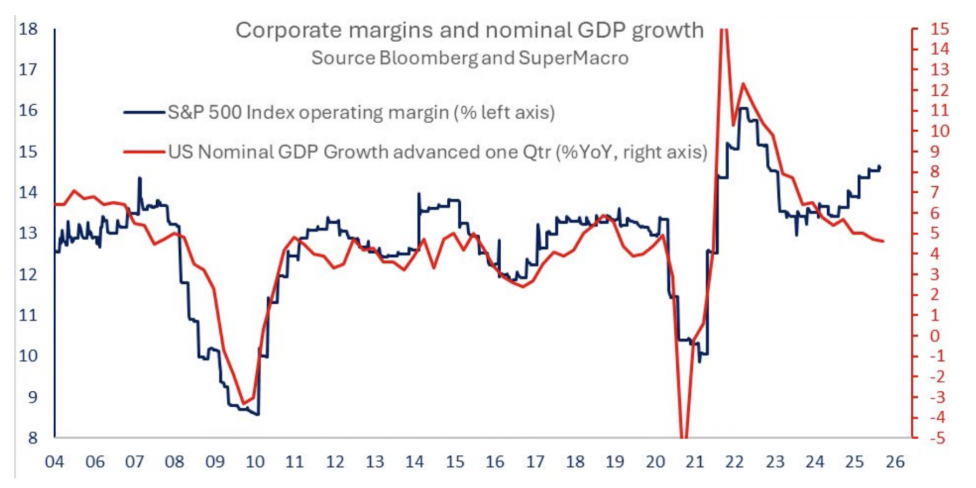
Corporate profitability has decoupled from its usual tight relationship with GDP growth, but profit margins may be inflated by hyperscalers depreciating their capex over too many years. How long will all the Nvidia chips Oracle is buying be useful to them?
Hyper-outperformance:
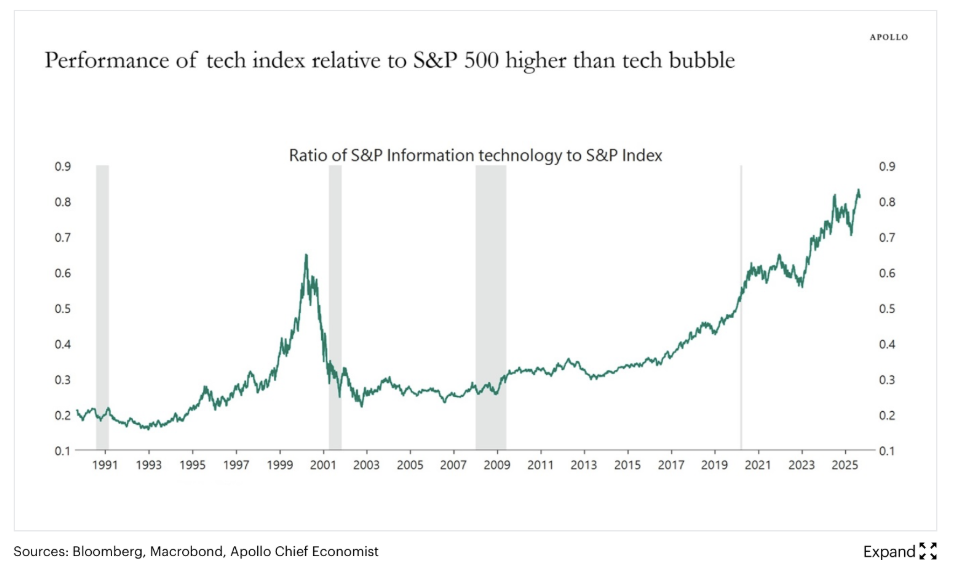
The outperformance of US tech is now well in excess of the dotcom peak. If it turns out to be a bubble again this time, it will likely be because companies like Oracle built too many data centers.
Warning sign?

Corporate use of AI might be leveling off. If so, OpenAI might struggle to come up with the $300 billion it’s promised Oracle and Oracle might struggle to keep its data centers busy.
AI is saving global trade:
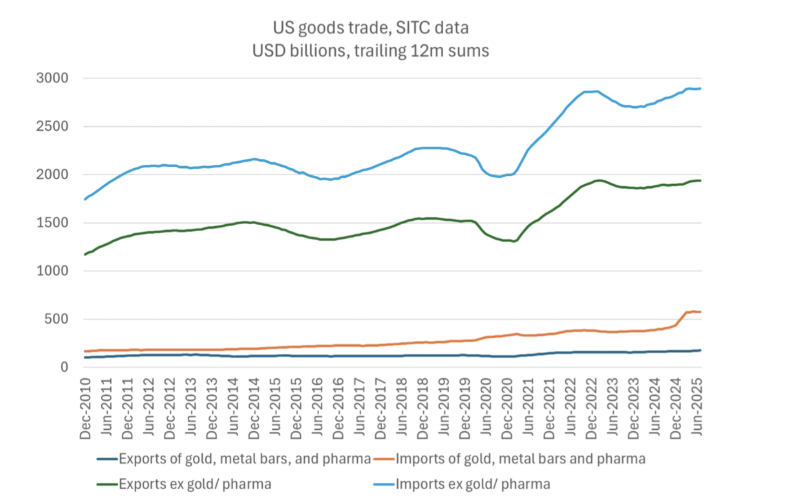
Brad Setser notes that despite tariffs, US imports will increase this year, with rising imports of tariff-exempt semiconductors offsetting a fall in vehicle imports.
Someone’s paying the import tax:

The US collected a record $31.4 billion in tariffs in August — but total revenue still fell $345 billion short of spending. The US is on track to run a budget deficit of over $2 trillion this year.
The coffee tax:
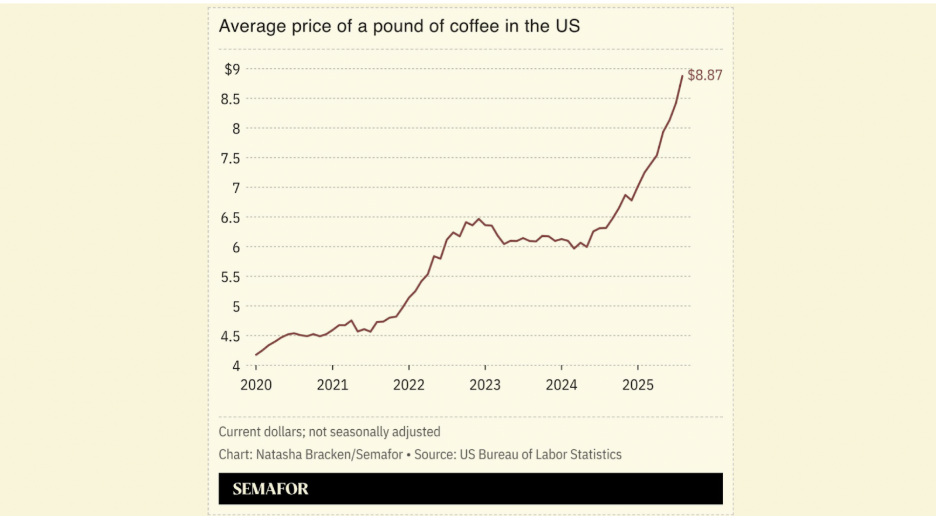
BLS data shows coffee prices up more than 20% on the year, thanks in part to the 50% tariff on goods from Brazil. So, how long does it take to grow a coffee tree (plant? bush?), and do they grow in North Carolina?
It’s never too late to make a few billion:
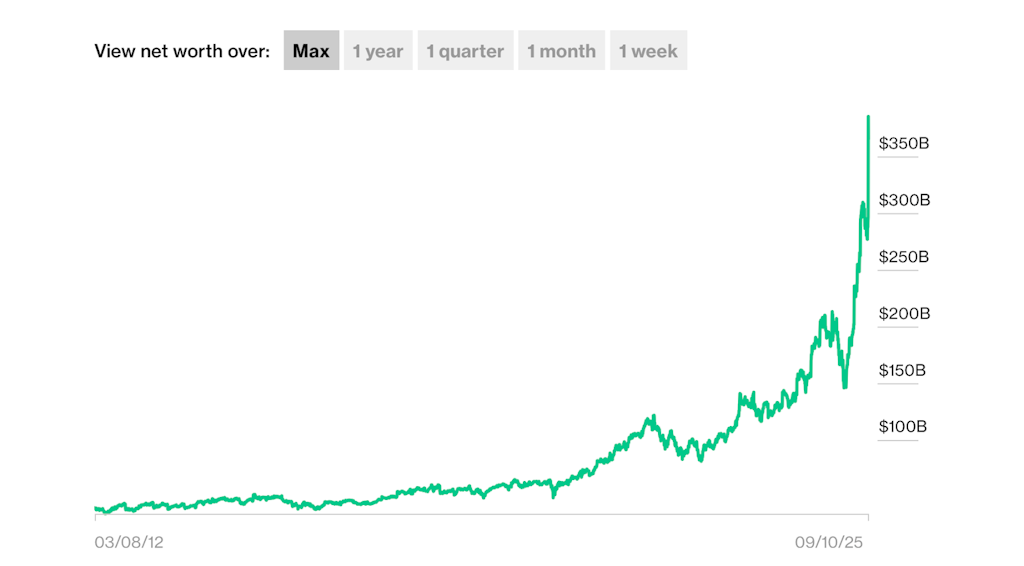
Ellison made 95% of his $363 billion net worth after the age of 72, and 40% after age 80.
The core of Ellison’s business philosophy, according to his biographer, “is that you can’t get rich by doing the same thing as everyone else.”
I wouldn’t say betting on AI meets that criteria — but betting bigger than almost anyone else might.
Have a great weekend, world’s-richest readers.
Get the news in your inbox. Explore Blockworks newsletters:
- The Breakdown: Decoding crypto and the markets. Daily.
- 0xResearch: Alpha in your inbox. Think like an analyst.






